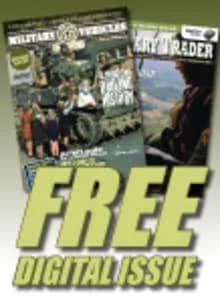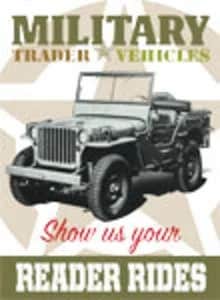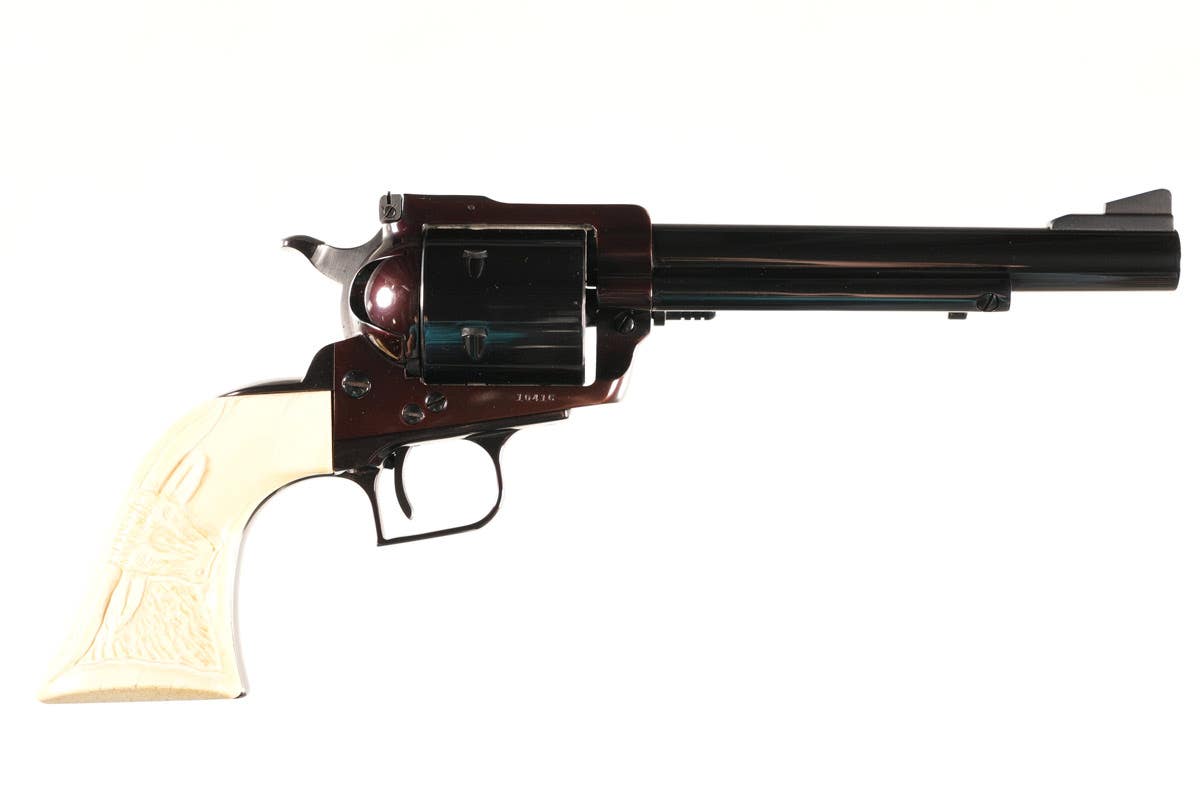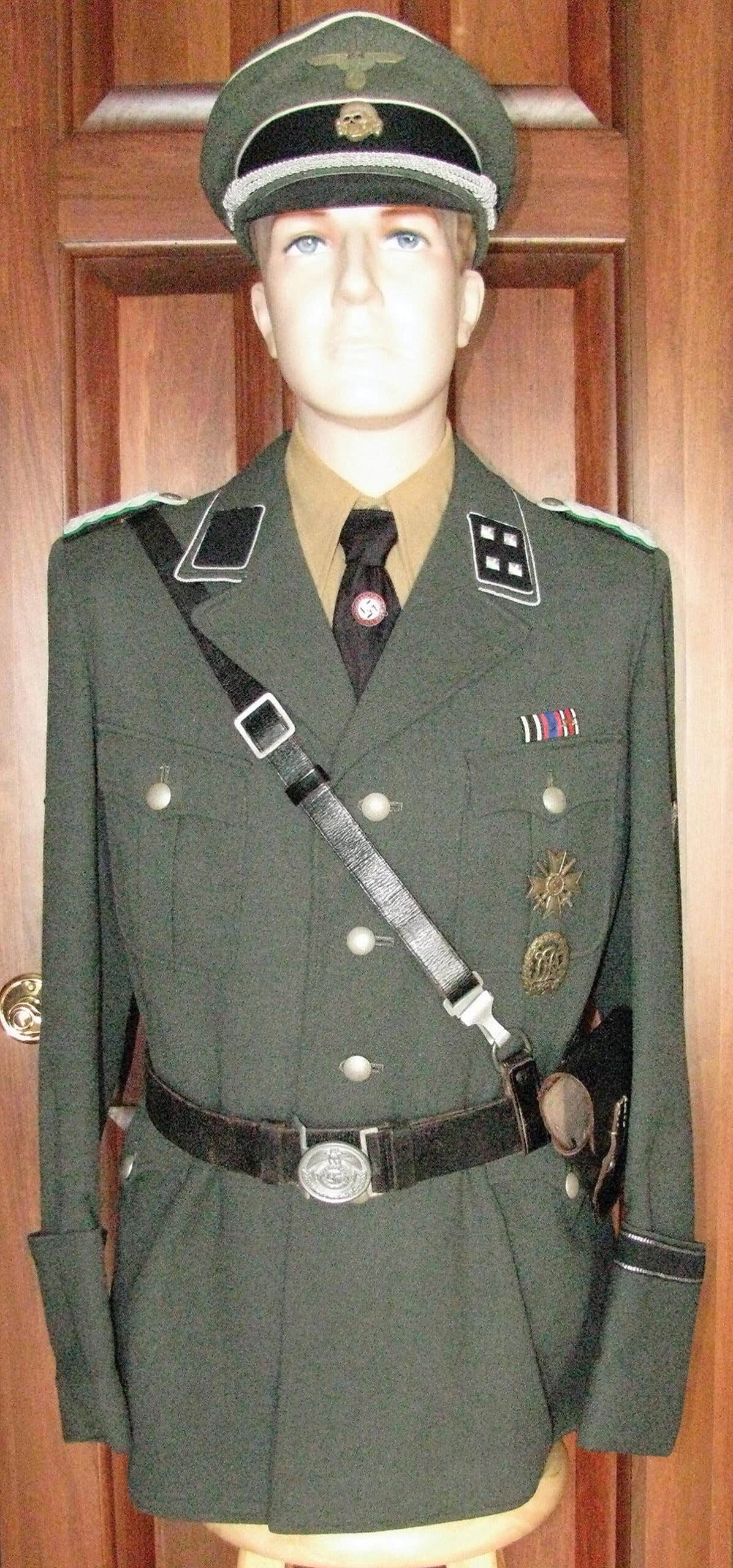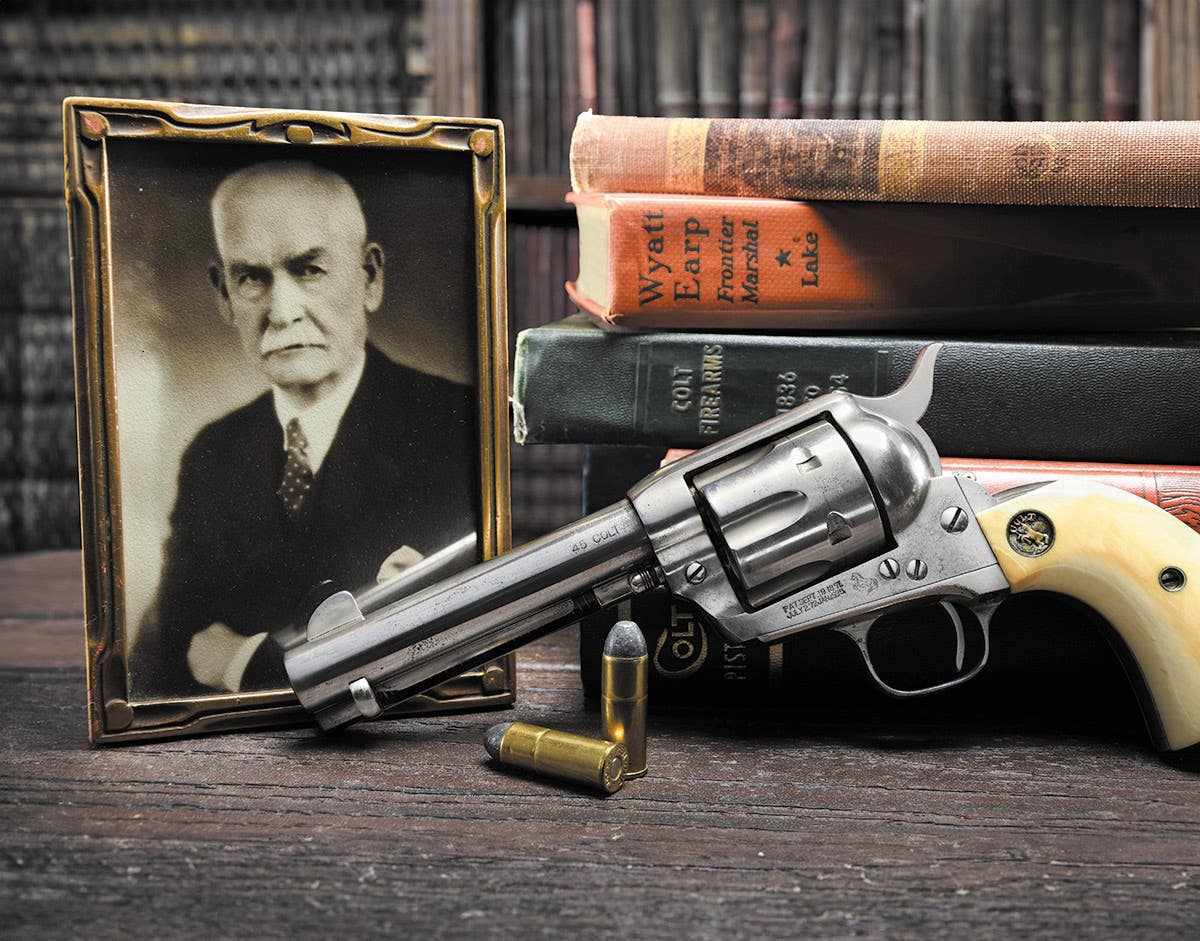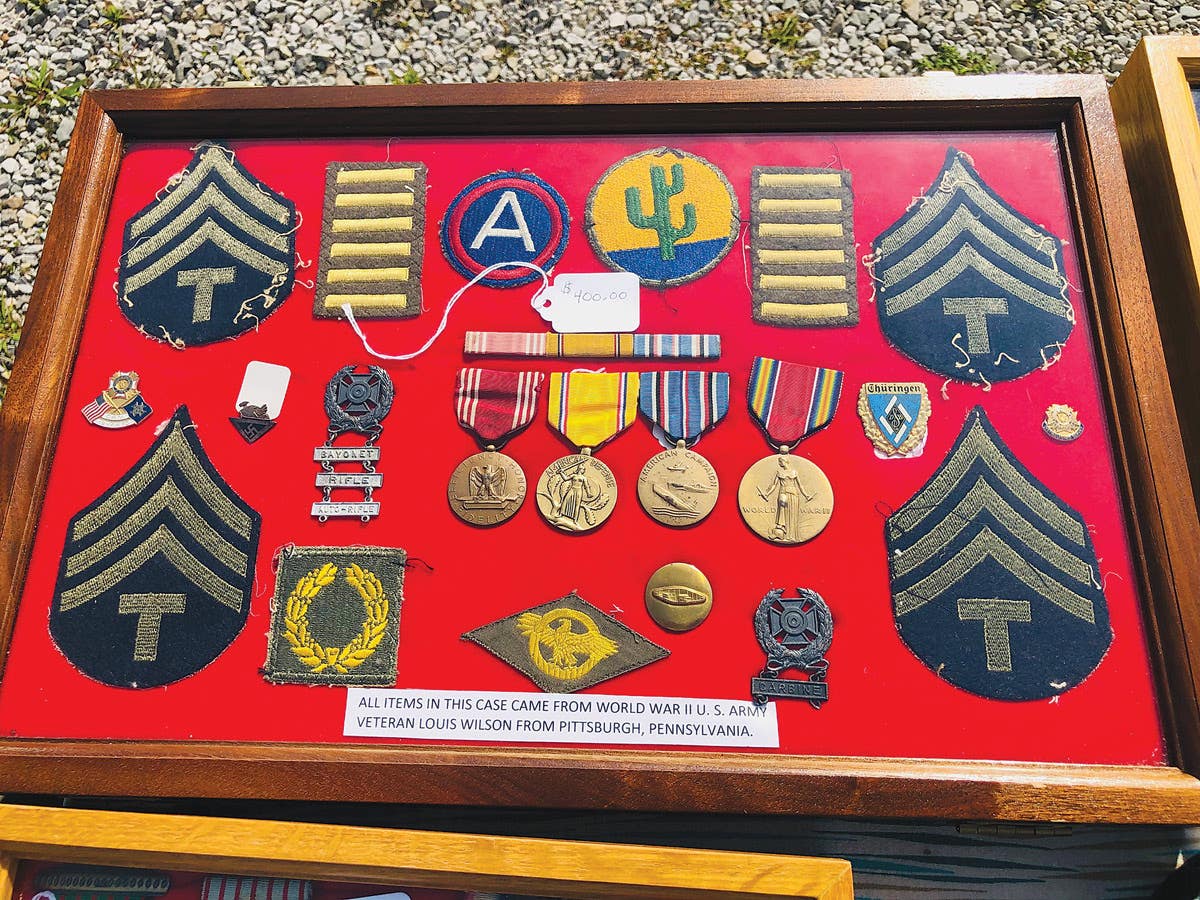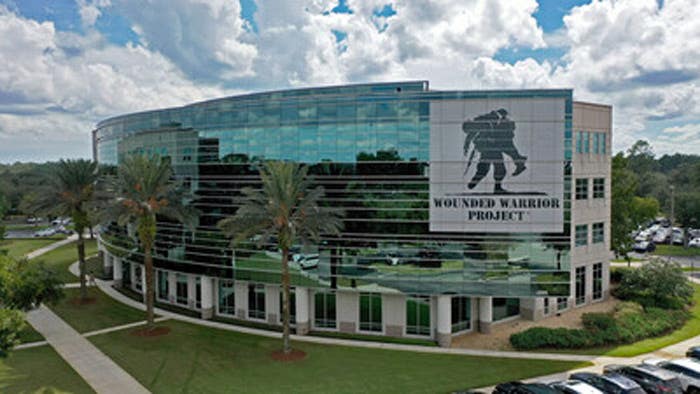10 Questions with James D. Julia: Health of firearms collecting
We are all in this together. In an effort to report on the state of different facets of the military collectibles market, Military Trader strives to discover and share the…
We are all in this together. In an effort to report on the state of different facets of the military collectibles market, Military Trader strives to discover and share the opinions of the hobby’s leading dealers and collectors. This month, we had the privilege to talk with James D. Julia, who most will recognize as the president of one of the foremost US auction houses, specializing in firearms.
Though James D. Julia offers a wide range of antiques, the company is best-known for antique and classic firearms. With more than 45 years experience in buying, selling, trading and collecting, Mr. Julia has a very good sense of the ebbs and flows of the hobby. We are pleased to offer his response to our “10 Questions on the Health of the Firearms Auction Market.”
Military Trader (MT): While most in the hobby recognize the name, “James D. Julia,” few know much about the man. Tell us a bit about your background.
James D. Julia (JDJ): I have been involved in the antiques and auction business for over 45 years now and in fact, the longest established major firearms house to my knowledge in North America today. We are located in Fairfield, Maine, where I have always based my company.
I grew up here, attended the University of Maine, and from the time I was a senior in high school until 1974, I assisted my father in his antiques business and his small country auction business. In 1974, I purchased the business. From that point in time, I gradually transitioned our company from a rural auction house to a major New England house and then, a major national auction house, and now, into a major International auction house.
Our goal for each of our four divisions for approximately the last 20 years has been to continually upgrade the quality and desirability of the average lot offered. It has always been our contention that the greater the significance of offering, the greater the response, and thus, the greater and stronger results for the consignor. Ever since the inception of the business model, we have proven it be extraordinarily successful.
Over the years, we have set and re-set numerous world auction records in all of our divisions. Based on annual sales, we are one of the top 10 auction houses in North America, generating between $50-60 million dollars in sales.
Not only do we sell firearms, we also have three other divisions: Our Rare Lamp & Glass Division is one of the top three in the world today. Our Antique Advertising, Toy & Doll Division is one of the top three or four in North America. Our Fine Arts, Asian, & Antiques Division is one the leaders of its type in North America. And our fourth division, of course, is our Firearms Division.
Our Firearms Division is the leader in the world today. Not because we sell the greatest number of guns, because we do not. Many auction houses (including my sister’s auction company, Poulin Auction Company) handle far more guns than we do. Our distinction is that we sell the greater number of high-end valuable, rare, and desirable firearms in the world today. In fact, no other auction house even comes close to that distinction. Our Firearms Auctions generally gross in the range of $15-20 million dollars. In addition, we handle higher end iconic collections than any other auction house.
1 MT:In such raucous economic times, how do antique and military firearms compare to other investments such as stocks or real estate?
JDJ: It has always been my belief, “How could you possibly lose collecting something you absolutely love?” One of the primary distinctions between collecting firearms or any other collectable is entirely a different matter than collecting stocks or real estate. I always counsel collectors to buy the best they can possibly buy, to buy what “speaks to them,” and what they truly love. Those, in turn, tend to be the best investment. Time and again, this adage has proven to be sound advice.
The worst case scenario is, if in some point in history, the item you purchased is no longer worth what you paid for it. You have still been rewarded in that the object has helped to fulfill a passion for you, given you a tremendous pleasure, and satisfaction of ownership for the period of time you had it. How can you possibly say that about stocks or real estate, or any other thing acquired simply for the purpose of investment?
In addition to all of this is the fact that, generally speaking, if purchased properly for fair prices, firearms have been a great investment over the years. Of course, anyone who has collected firearms or has for the past few years, might respond that the number of the guns in their collection are worth less than what they were in 2007 and 2008. There is no question about that.
In 2009, almost everything on the planet dropped in price. Firearms were not immune from that, and the price structure of firearms, in general, did drop off. The degradation in price for firearms (in most cases) was far less than the degradation of price of the stock market, land in Florida, or most other things.
In March 2009, when the world’s economy was as bad as it possibly could get, I sold the first session of Joseph Murphy’s phenomenal collection of antique Colts. Murphy had collected some of the finest Colt’s in the world in condition, rarity, and historical significance. Both he and I were confident that these extraordinary items would do well even in a down economy because of their great significance and because of the passion of people who collect these things.
When we began to promoting the sale, it turned out to be an extraordinary success. In fact, the first lot up that was estimated at $275-500,000, realized $517,500. The next lot up carried a pre-sale estimate of $350-650,000 and it realized $402,500. Not everything sold, but, all in all, it was an extraordinary sale.
One thing I will always remember was that the GE stock, that had been trading at $37 or $38 a share eight months earlier, was now below $10.00/share. Would rather have stocks, or would you rather have firearms?
2 MT:How would you characterize a “typical” firearms bidder today? How has that person’s collecting habits changed in the last thirty years?
JDJ: Regarding a typical firearms bidder today, a collector is extremely well-informed and with good reason. There is such a vast amount of knowledge available today that was not available 20-30 years ago. Both via the internet, printed material, etc.
So, the typically firearm bidder today, in my mind, is far more savvy than collectors of long ago. Whereas many collectors of old tended to collect everything that struck their fancy, today more than ever before, collectors tend to specialize. Some in a specific era, some even more focused with specific manufacturers, and some even more focused than that, like specific manufacturers of a specific era and limited to just certain models, etc. In our opinion, the collector today is not only more savvy but more sophisticated.
How has collection habits changed? Having dealt in firearms and most other forms of antique collectables, it has become very apparent to me that tastes and interests have changed over a period of time, partially impacted by the law of economics. In the 1950s and 1960s before I entered the field, the most sought after items was weaponry of the Revolutionary War era and earlier. Gradually, the prices within that genre increased because the demand rose rapidly. As the prices rose, two things happened:
It became more difficult for the masses to collect that sort of thing because of the ever increasing prices. Any buyer wishing to get into that niche had to have a fair amount of money in order to put together a collection. Generally speaking, as the prices accelerated, it narrows the amount of the buyers that can pursue the goods to the more affluent people and leaves behind many of the generally populace. What happens then is that the general populace begins to collect something else that is far more readily available and more reasonably priced.
Eventually interest began to build in the 19th century weaponry such as Colt, Winchester, etc., and they began to accelerate in price. As we moved forward, the Civil War items began to increase dramatically. As the market got really high on those items, many of the beginning collectors moved forward into the Indian War items, and eventually, the movement of the masses began to focus on military weaponry of the early 20th Century.
Today, there is a tremendous swell of interest in military items of the mid-20th Century from WWII, etc. Gradually, prices are beginning to escalate on firearms from later military engagements like the Vietnam War, Iraqi War, etc. Whether you are talking about dolls, guns, or rare glass ware, there tends to continually be movement within the market place of the collecting field impacted by the economics which include the ever increasing prices and the availability of goods.
One other thing that also happens when the interest level begins to build in a new frontier or new collecting genre and that is, initially prices are very reasonably. That is part of the reason masses of people begin to collect those items—they can start to put together a collection for a reasonable price. However, as more people move into that collecting niche, the prices begin to accelerate. As prices accelerate or increase, it draws attention to those types of specific firearms, and the high prices become enticements for many people who have dealt with these types of items for a long time, to put them out on the market place.
So, as the collecting frenzy heats up in a specific genre, the continually rising prices attract or draw out even more goods until prices get so high that new collectors tend to back off. Once new collectors tend to back off, a real adjustment within that market place tends to take place. With fewer people coming into the market place, there is a drop in demand for the goods, and then some of the prices drop off a bit. As the price drops off a bit, the movement of fresh goods in the market place dries up. Meanwhile, masses of collectors have moved on to something else.
3 MT:Thirty years ago, it seemed a couple hundred of dollars would buy a person a Civil War era M1842 musket. Looking at recent sales, these are hammering down at prices beginning at about $1,000. That’s a steep return on investment. How do you project investment potential of Civil War long arms over the next fifteen years?
JDJ: Civil War arms have appreciated dramatically over the past 30 years, but how do I see the movement over the next 15 years? The first portion of the answer to this question is, indeed Civil War long arms have increased dramatically over the past 30 years. Up to a high point of around 2007-2008, a readjustment within that field began to take place that was exacerbated by the down turn in the economy during 2009. In actuality, many or most Civil War long arms dropped off in price a bit. This is a natural movement within a collectable field. After all, nothing continues to go up forever.
Civil War firearms that, at one time, were available for little or nothing, began to be collected by the masses. As more people rushed to the Civil War field, the prices jumped up until they got to the point where they were so high that it limited the number of new collectors coming into the field. That began to lessen the demand. At a certain point, there was a readjustment in the market.
Today, many Civil War long arms are available for less than what they were in 2007. It is not the end of the world, it is the natural progress.
Over the next 15 years, now that Civil War firearms have dropped off in price, I fully expect that they will appreciate in a gradual, soft increase. Nothing dramatic such as what took place between 1995 and 2007. In fact, if one wanted to get into the market place collecting Civil War firearms, 2005-2006 was not the best time for the collector. 2015 is actually the best time for someone to begin collecting Civil War firearms. Adjustment in price has created a number of buying opportunities out there.
4 MT:In recent years, we have seen an increase of “second-tier” military weapons such Mosin-Nagant rifles and Japanese Arisakas in the market. How do you feel about the historic and monetary value of these typically under $300 military rifles?
JDJ: At one time, a Model 92 Winchester in outstanding condition could be had for a few hundred dollars. Now it is a matter of thousands of dollars. At one time, certain military arms from the WWI and WWII could be have had for hundreds of dollars but now cost many thousands of dollars.
Generally speaking, if we are talking about something that is a “second-tier” firearm today, the greatest potential in advancement in value or investment potential is not with the common place, poor condition example. It is with the exceptional example. A very common military firearm with a rare alteration in excellent condition might be available for $600 today whereas the standard variation in average condition is worth $200. The $200 item might possibly double in price at some point, but the very rare, high condition $600 example might multiple in value many times in the years to come.
The potential is in the rare high condition examples of whatever you buy. This is why I always counsel collectors to buy the best they possibly can.
5 MT:Two-parter: During the past twenty years, you have probably seen many patterns in firearms collecting emerge. Can you tell us about the most dramatic rise of a particular segment of the hobby? And conversely, can you tell us about one of the most dramatic drops that you have witnessed?
JDJ: In regard, to the most dramatic rise, that is not an easy answer. In a period between 2000-2008, there was a dramatic rise in most collecting fields of firearms, particularly the traditional ones like Winchesters, Colts, Civil War, etc.
Class III stands out and has always appealed to me as being a great investment. The primary reason for this is that in the 1960s when the amnesty took place and people could register their guns, only a few hundred thousands were registered, making all the others illegal. Since there will never be another amnesty to legalize Class III or machine guns, only those that were made legal in the early 1960s through registration are available— but not all of those are still available today. Some of have been lost as a result of theft, fire, or other catastrophes. The actual number has decreased, but the demand has increased.
I tell people that it is better than buying shore front property because of the limited numbers and because they are such fun things to possess. The demand is ever-increasing on them.
The most dramatic drop? Again, we go back to 2008-2009, there were a number of dramatic changes in that time period. Some changes began to take place before the economy collapsed.
In my observation, Winchesters, which had continually increased in value significantly over the past 20 years, finally got to the point that the common Model 92 (in excellent condition) was bringing thousands of dollars. 20 years earlier, this same gun might have been available for a couple of hundreds of dollars—something a garage mechanic could purchase for his collection. Now, the same gun is worth thousands of dollars, and there is no way a garage mechanic put together a collection of Winchesters at these types of prices.
The law of economics resulted in the value or the pricing of the items to exceed the markets ability to absorb the goods. Prices began to decline even before 2009. The crash of 2009 helped to exacerbate the decline, and there was a readjustment in the price of Winchesters. Now, they prices are gradually coming up.
Once again, I have to go back to what I said earlier. The best represents the best potential, and the likelihood to retain much of its value or appreciate in value. Fortunately, Winchester prices dropped off a fair amount but have now gradually started to come back. There is a huge buyer base for Winchesters and for Colts. The sustainability of value is strongest when there is a large base of collectors.
Probably one of the more dramatic drops that I have experienced since 2008 was the Civil War field, particularly Confederate material. In some cases, the drop in price was dramatic. Again, the law of economics drove prices to an ever-increasing high. Eventually, the market moved beyond the demand, causing the drop off in price. But this, too, was exacerbated by the collapse of the economy.
The great news is right now in my mind, one of the better buys in the world of old firearms is Civil War and particularly Confederate material. If you were a collector, and you had a choice to get in the market in 2005 or 2015, I can simply tell you that you can buy twice or three times in 2015 than what you could in 2005. So there is an extraordinary opportunity in my mind right now in that field.
6 MT:How does cleaning and repairing of firearms affect the bidding? Can you give an example or two of how cleaning, repairing, or replacing parts have dramatically affected the sale price of a weapon?
Generally speaking, it depends upon what we mean by cleaning and repairing of firearms. Obviously, a deluxe Winchester rifle with a broken stock and some light overall rusting will have minimal value because of its condition. If it is properly restored, the value will increase dramatically. Of course, the value for that deluxe Winchester repaired will never meet or exceed the value of another example that was never cleaned or never restored. So how dramatic the effect of cleaning or repairing depends upon:
a) What the item is and how much in demand it is. If there is a great demand for an item, more people need one to fill a hole in their collection and they would be willing to accept a less than fine example to fill that hole whereas if there was a limited number of collectors in a given field, it is more difficult to sell something that is “second-tier” in condition.
b) We also have to address on the extent of cleaning and repairing. Light cleaning won’t generally have a dramatic effect upon an item. However, if is highly cleaned, buffed, polished, or something like that, it could have a devastating effect on the value of something rare. Repair, once again, if we are talking about replacing a trigger and replacing a broken hammer with an exact period replacement hammer; the impact upon the value will be minimal, whereas if it is a mismatched cylinder or if the stock was broke in half and the barrel lost a lot of its bluing and had to be reblued, all of a sudden we are talking about a major change in the originality and a major change in the value.
However like I said, if you found a deluxe Winchester and it had light overall rusting and a broken stock, the value is most definitely going to be enhanced by properly cleaning and restoring it. As I have continually said, if you are buying an example for your collection, try to buy the best possible. Try to avoid significant repairs. Try to avoid guns that have been over cleaned. Try to acquire guns that have the greatest amount of original finish, etc.: Those are the best investment.
7 MT:When it comes to firearms, many have a fear in the back of their mind that it may become illegal to own their weapons at some point in the future. What do you see as the biggest threat to the hobby of firearms collecting?
JDJ: In the years to come, the biggest threat that I see is the politics of collecting firearms. When I was 17 years old, I might drive to high school with a gun rack in my pickup truck. Some of my friends would actually have put their guns in the storage locker during the school day so it would be available for them to go hunting with at the end of the day. It was a prideful thing to have guns and a large majority of our population was taught how to use guns, how to hunt, to target shoot; guns were a part of the American way of life. For those who collected guns, target shot, hunted; it was a source of pride.
Today, unfortunately as the politics of firearms in general change the acceptance of firearms, the use of firearms, the collecting of firearms, and hunting continually changes and the numbers of our fraternity begin to diminish.
The biggest threat I see is the decreasing number of people who collect, hunt and shoot. The two things that I would do to ensure the future of firearms in our country would be to:
a) Support the NRA. We are one of the last bastions of firearms owners with rights in the world today and it is because of the diligence and efforts of the NRA.
b) To work at doing everything we can to increase interest in target shooting, hunting, and gun ownership in the years to come. Teach your children, male and female, about the joys of target shooting, hunting, and the pride and interest in ownership of collectable firearms.
A few years ago, I handled the fabled Alden Owens Collection of firearms. At that time, I met Mr. Owens’ nephew, Ray Roy, who had a position with the NRA Foundation. As a result of meeting Ray, he explained to me that the NRA was not just a lobbying organization with a vast amount of lobbying capabilities and a large bank account. It consisted of what is referred to as the NRA Foundation. The Foundation’s primary responsibility is to promote and expand the interest in the shooting sport. I subsequently made a significant pledge to Ray and the NRA Foundation to develop a special fund, the earnings of which, would be used in the years to come to promote the youth involvement with firearms, training of shooting and handling of firearms.
8 MT:Our readers love stories about collectors’ “Favorite Finds.” Tell us about what you consider one of your favorite finds during the past 30 years.
JDJ: I have truly been blessed. I do not just say this, but I think of it frequently. I think about the fabulous collectors and the most exciting and interesting characters whom I have met over the years in the gun collecting business. I think about the fabulously historic firearms that I have had, and the historic engagements in which they have been involved with and there are so many examples of “favorite finds.”
One of the most exciting however has to be John McBride’s Colt Walker pistol. In 2008, I received a phone call from an elderly gentleman who explained that he had a Colt Walker. 80% of the Colt Walkers offered to me tend to be fake or altered so I questioned him why he thought his Walker was genuine. In his typical dry wit, he said if it ain’t right, my great- great- great-uncle is going to be disappointed. He picked it up on the battlefield during the Mexican War. At that point he had my attention.
Not only had his uncle picked it up on the battlefield but later, he had become a general in the Civil War and carried it. He wrote a book after the Civil War, in which he talked about his Colt Walker.
I asked him about the condition of the gun. He told me that it had around 30% of original finish which, for a military Walker was extraordinary. I was sure he was exaggerating, but any finish on a genuine Walker is indeed highly desirable. During the course of the conversation, he told me he lived in Montana, but he was very familiar with me. When I asked him why, he said he went to college at the University of Maine where I also attended. I asked what he majored in and it was forestry—that was what I majored in also!
I then asked where he lived and he replied “Libby, Montana”. Wow, I used to live in Libby, Montana. I had left college for a year and a half and had intended to go to Alaska but never made it. I ended up in Libby, Montana, where I worked for a matter of months and fell in love the region. I always wanted to go back.
Later, John sent me photographs of his Colt Walker. It was evident the Walker was far better than 30% finish. In fact, it turned out to be in the finest condition a military martial Walker to ever come to auction.
John and I finally came to terms, I flew out to Libby, Montana, with my Chief Firearms Consultant, J.R. LaRue. We almost fell over backwards when we saw the gun in person. Then we discovered that, not only did he have the Walker but he had the original flask with it, too! We finally cut a deal and we estimated the Walker to bring $500,000-1,000,000.
The night before the October 2008 auction was a gut-wrenching one for me. The news media implied that the world banking order could possibly collapse in the near future because of the devastating drops that were taking place on Wall Street. I was about to conduct one of the most significant firearms auctions of my life. I had this extraordinary Walker pistol and was extremely concerned that I might not generate the kind of money I had promised John back there in Libby, Montana.
The next day, despite all the gloom and doom on television, there seemed as though there was nothing wrong with the economy at all. The auction was an extraordinary success. John’s Walker brought $920,000—at the time, the most expensive single firearm ever sold at auction in history.
Other guns brought multiples of hundreds of thousands of dollars that day, and the sale at $12 million dollars was the second highest grossing firearms auction in history (the highest one having been conducted by me in March of that same year at $12.7 million dollars).
9 MT:We all have a story about the “one that got away.” Tell us about the one item that slipped through your fingers and can still keep you awake at night.
JDJ: That is an easy one for me. Ever since I was a young man and saw Gary Cooper star in the movie, “Sergeant York”, I have always been enamored by this man. Over the years, I read more about Alvin York and came to admire him greatly. About 15 years ago, someone from a large library called and asked if I handled machine guns at auction. At the time I did not. I knew that the laws were rather restrictive and that concerned me so I just never got involved. So I responded that I was not interested in machine guns. They said I would be interested in this one, because it would be worth a lot of money. Regardless, I still declined, but I did ask why he thought the machine gun was worth a lot of money?
He asked if I knew about Sgt. York, shared that this was a machine gun captured by Sgt. York. I was absolutely spell bound. Cooper was a hero of mine as a movie star but Alvin York was a military hero of mine. His life story always appealed to me. All of sudden, this machine gun meant something to me, and I was definitely interested.
My next question to him was it registered. He replied, “What do you mean by that?” That automatically told me that it was not registered, and I explained to him that if had not been registered back in the 1960s, it was illegal to sell, and I could not help.
He explained that it had been in the library for years, and they had decided to get rid of it. He asked how he could register it. I shared that it wasn’t possible. He said that they had a very powerful Senator in their state, and he was sure that he could pull some strings. I, of course, then queried what state he was in, Massachusetts. I laughed. He would never get Teddy Kennedy to pull any strings at all to get this machine gun registered!
I told him that his best bet was to donate the gun to another acknowledged museum. I explained that I thought ATF would allow the transfer from one museum to another but would not allow for the sale of the gun. I suggested that there was a museum I thought in the Appalachians that dealt with Sgt. York, and that they would probably be very interested. I also suggested the NRA museum. Eventually, I forgot about the machine gun.
Some years later, after I got my license to handle Class III weapons, I began thinking about Sgt. York’s captured machine gun and realized that, although an active machine gun would be illegal to sell, by simply removing certain mechanisms from the gun, the remainder of the gun would be legal to sell. But unfortunately, I could not remember the name of the library in Massachusetts that had the machine gun!
A couple of years later when I was looking at an NRA magazine, I noticed that Sgt. York’s machine gun had just been donated to the Museum of the Appalachians. I felt good about that knowing the gun had not been lost.
A few months ago, I visited my good friend, J.R. LaRue and his wife, in Tennessee, and made the Museum of the Appalachia one of the highlights to see on my visit. There, at the museum was Sgt. York’s captured machine gun with a great deal of other ephemera from Sgt. York. I was terrifically sorry I never got to handle it, but it was a great satisfaction to see the machine gun ended up where it belonged all along.
10 MT:And finally, the question we all want to ask the experienced veteran collectors and dealers, such as yourself, “How will the hobby of firearms collecting change over the next ten years?”
JDJ: I have explained, whether you are talking about toys, antique glassware, or firearms, the collecting frontier tends to be continually moving forward. Things that 20 years ago would not be looked at or considered by most collectors, now become highly collectable and begin to attract more and more collectors because of the reasonable pricing and the availability of goods. I anticipate that this will continue to happen in the firearms world.
I also believe, that despite everything that we do, restrictions, laws, and regulations will continue to expand. I would say that the continued success and enjoyment of ownership of firearms, the ability to collect, and the ability to hunt is totally dependent upon each and every single one of us.
As I said, the gradual tendency of the literal element of our society would be to decrease the ownership of guns, decrease the use of guns, and eventually, to outlaw them completely. Therefore how dramatically our firearms collecting will change in the years to come will be dependent upon what we allow to be implemented in regards to laws and regulations about guns and the ownership of them. It is the duty of all of us in this collecting fraternity to continually monitor and fight unnecessary regulations and rules.
John Adams-Graf ("JAG" to most) is the editor of Military Trader and Military Vehicles Magazine. He has been a military collector for his entire life. The son of a WWII veteran, his writings carry many lessons from the Greatest Generation. JAG has authored several books, including multiple editions of Warman's WWII Collectibles, Civil War Collectibles, and the Standard Catalog of Civil War Firearms. He is a passionate shooter, wood-splitter, kayaker, and WWI AEF Tank Corps collector.
